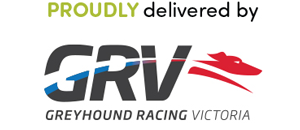Everyday you will interact with your greyhound, but it is a good idea to get into the habit of regularly checking for the signs that might indicate that your greyhound may not be 100% right.
The key to knowing when your greyhound might be unwell is to first know what your greyhound looks like when it is fit and healthy. Many retired racing dogs come with some ‘war wounds’ – maybe a few scars, or remnants of an old injury. You will need to know where on the dog these are, and what they look like so that you can monitor them for changes.
First thing to note is a change of behaviour
When any animal is unwell or injured, often the first thing you will notice is a change in their behaviour. Maybe they are walking differently, holding their head to the side, maybe they are reluctant to eat or play, or maybe they are licking or scratching a specific area. These are all clues as to a possible problem.
When you spend a fair amount of time with your pet, you will get to know what ‘normal’ is for them. If things change, and you notice the dog doing something they don’t normally do, or not doing something they normally do, then it is certainly time to investigate.
Ins and Outs
When dogs are unwell, one of the things we need to watch is whether or not they are eating and drinking, and if so, how much. Sometimes the amount of food or water the animal takes in is increased, at other times it might be less than normal. Different disease processes can lead to changes that influence these factors, and they often give a clue as to what might be wrong.
Equally, what the animal puts out at the other end is also important. The quantity and colour of the dog’s urine can indicate disease, as can the quantity and consistency of any faeces/droppings. The behaviour of the dog as it goes to the toilet can also indicate possible problems.
The ‘All Over’ check
It only takes a minute or two to check your greyhound from nose to tail, and if you do it regularly, you will certainly get used to what everything should look and feel like.
Starting at the head you can check your dog’s eyes. They should be clear and bright, with no signs of discharge. Your dog’s nostrils should also be free from discharge. Next, look into each of your dog’s ears. The skin here should be pink and there should be no smell or discolouration. If you notice a bit of wax, you can wipe it out with a tissue, but there should not be a lot of colour on the tissue when you are finished.
Next you can check the lips and teeth of your greyhound. The lips should look the same thickness all the way around, and when pulled back, you should be able to see lovely clean white teeth surrounded by pink gums. Greyhounds are notorious for having dental disease, so regular checks are important to monitor any build up of plaque or tartar. Some greyhounds need to have their teeth cleaned by a vet to remove build up of plaque, and to keep their gums healthy. If the gums of your greyhound are not the normal colour this can indicate problems and a trip to the vet is needed.
Next gently run you hands over the dog’s body running down the neck and along their back and sides. You are feeling for lumps, bumps and swellings, and any areas of skin that feel different. You can also assess the dog’s weight and condition as you do this – the skin should be soft and hair shiny, and you should be able to feel the dog’s ribs with a bit of cover over them.
As you feel along the body and then down the full length of the tail, take note of any flinching or areas that seem painful. Sometimes this response is quite subtle, but can give hints as to areas of injury or soreness.
Next feel down each leg, and pick up the foot and check the feet. Greyhounds can get a myriad of foot problems from infected nail beds, to corns (which are found in the actual pads of the foot). Some greyhounds are sensitive around this area, so be patient, and don’t forget to praise and reward the dog for allowing you to check them.


